About the Camino del Norte
Camino de Santiago routes
- About the Camino del Norte
- The most reserved routes along the Camino del Norte
- Route of the Camino del Norte
- The best season to do the Camino del Norte to Santiago de Compostela
- Guide to the places you can’t miss on the Camino de Santiago del Norte
- History of the Camino de Santiago del Norte
- The Camino del Norte with Santiago Ways
- The Camino de Santiago with Santiago Ways
The Camino del Norte, also known as “Camino de la Costa” or “Camino de Santiago del Norte” is one of the oldest routes. It crosses the Iberian Peninsula from east to west, bordering, in a winding way, the entire Cantabrian coastline.
From Irún to Santiago de Compostela, the north route covers 824 kilometres. It is the second longest route of the roads that cross Spain to reach the capital of Compostela, behind the Via de la Plata. The route is divided into 34 stages of approximately 25 kilometres, although many of them exceed 30 kilometres.
The final destination of this route, as in all the paths of the Camino de Santiago, is the capital of Compostela. The beginning is always the choice of the pilgrim.
The official start is located in Irún, at the French border. However, some guides point out that their place of departure is located in Bayonne, a locality of the south-west of France, entering Spain, after crossing the mythical Bridge of Santiago, in Irún.
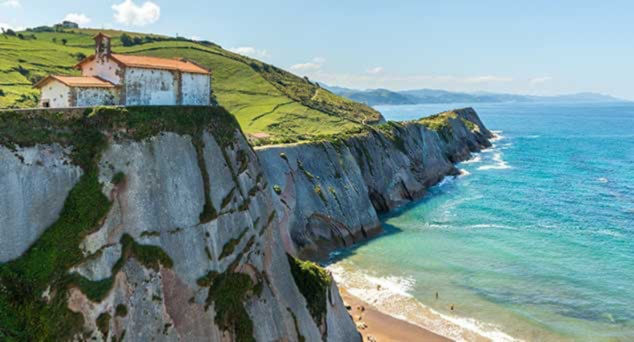
We want to talk to you at this stage about the Camino de Santiago del Norte, one of possibly the most spectacular and most rewarding routes for those who want to enjoy the unforgettable experience that the Camino de Santiago implies.
Indeed, this route of the Camino de Santiago del Norte has some characteristics that make it a very special tour and that we want to share with you. That is why we invite you to discover with us everything you have to find out. Do you dare to?
Why choose the Camino del Norte?
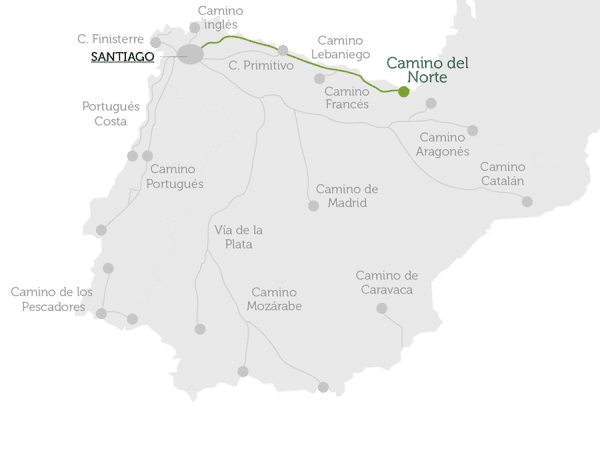
Next, we want to give you some reasons why you should do the Camino de Santiago del Norte. It is one of the most interesting options for both pilgrims who are walking and for those who want to complete the Camino by bike.
In general, we can say in advance that the experience of the Camino de Santiago del Norte is, by a distance, one of the most gratifying that exist. This means that it is one of those which best fulfil the purpose of the Camino de Santiago in general: tenacity and effort.
1. It is a very exciting challenge: without a doubt, the Camino de Santiago del Norte is the most demanding routes of the whole Camino de Santiago. Both for climatic reasons, terrain and its profile we could say that it is has a higher level of difficulty with respect to other routes.
It is, in fact, one of the most exciting Caminos and, consequently, one of the most gratifying ones when it comes to finally arriving in Santiago.
2. It is an alternative route to the Camino Frances. The truth is that it is the most popular route and, consequently, the busiest is the Camino Frances. This makes it difficult to find accommodation or similar issues on many occasions (if the Camino isn’t well planned).
In this sense, the Camino de Santiago del Norte is an excellent alternative that, besides taking away the negative aspects of the Camino Frances, will give us other points in its favour.
3. The landscapes are another of the strengths of the Camino de Santiago del Norte. Along a wide stretch, we will cross the road parallel to the Cantabrian coastline and its spectacular peaks and cliffs. At the same time, we will be able to contemplate all the imposing beauty of the sea and breathe in its pure air.
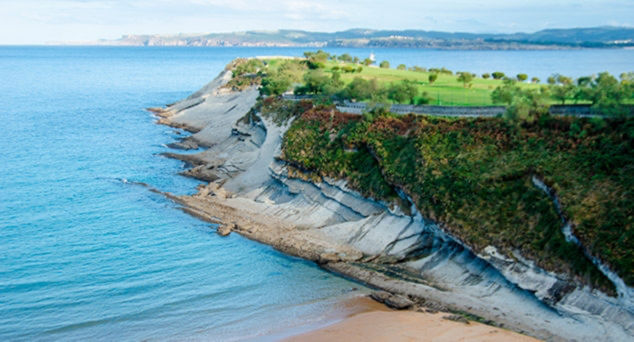
4.- It has a great diversity of cultures: the fact of crossing such diverse areas of the Spanish geography ensures that we can see by ourselves the cultural change that occurs among all areas.
So, we go through different historical and cultural areas where, as on any other route, we can appreciate these contrasts.
Information about the Camino de Santiago del Norte
It could be said that the route of the Camino de Santiago del Norte is fundamentally a natural route. That is to say, its characteristics have more to do with the enjoyment of the natural environment than that of zones of heritage.
Of course, there are municipalities and monuments to see along its route, but it is the quintessential way for those who prefer to enjoy nature.
This makes it a more demanding route than others, although with regard to the benefits that it has in terms of infrastructure, landscapes and beaches, has nothing to envy in relation to the other routes.
Therefore, it has an advantage that is for not being the busiest, it counts throughout the year with more than enough places in its numerous lodgings. They are of sufficient quantity so that the Camino de Santiago del Norte does not miss out on any of the comforts that we can find on other more crowded routes.
It crosses the Basque Country, Cantabria, Asturias and Galicia and has several alternatives that we will detail later on.
The most reserved routes along the Camino del Norte
Then, we will talk about the quietest routes within the option of the Camino de Santiago del Norte. We would like to remind you that with Santiago Ways it is possible to experience them all with the maximum guarantee and with all the possible charm that there is.
We hope that this list will help to encourage you towards one option or another, although it is difficult to take into account the number of incentives that exist in each of them.
The Camino de Santiago del Norte from San Sebastián
You could say that starting the Camino del Norte in San Sebastián is a great option for different reasons. All of them are enclosed in this wonderful city: from its historical heritage, its great beauty to its gastronomy, one of the most prestigious in the world.
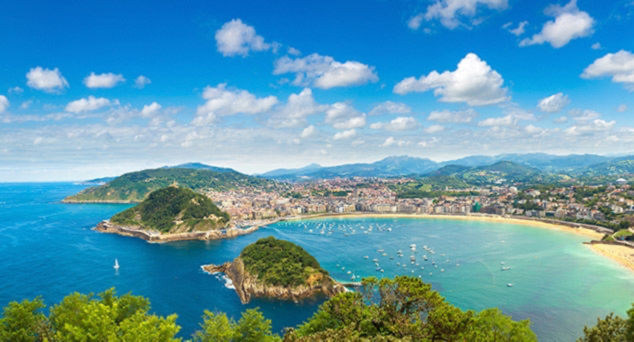
Therefore, the first route of the Camino del Norte that we present to you starts from San Sebastián and passes through some municipalities such as Guernica and ends in the city of Bilbao. It travels a total distance of 101km distributed in a total duration of 7 nights and 8 days.
There is the option to include breakfast and dinner or only breakfast. The lodging will be in houses and beautiful rural hotels managed with great care. It can be booked all year round.
The Camino del Norte from Bilbao
Also, the city of Bilbao, where this route begins, has numerous claims. Among them, you can not miss the Guggenheim Museum or the old town of the city itself. Obviously, its gastronomy is also highly recommended, as well as the number of interesting villages that we will travel through until we arrive in Santander.
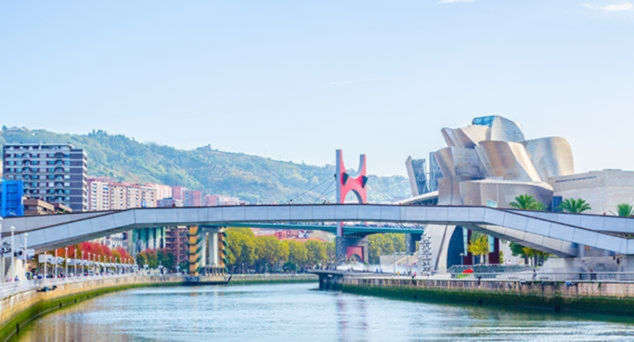
It covers a distance of 100km distributed between 6 nights and 7 days and again offers the option to book only breakfast or breakfast and dinner. As could not be otherwise, accommodation is scattered between hotels and cottages of great charm.
The Camino de Santiago from Santander
This stretch runs from the splendid city of Santander to the magnificent location of Ribadesella. In this way, we will visit several of the pearls on the cantabrian coastline in a journey of a total distance of 116km distributed in 7 nights and 8 days.

It can be booked all year round and includes breakfast and dinner or only breakfast. The accommodation, as in other stages, will be very comfortable.
The Camino del Norte from Ribadesella
This section is one of the longest, a total of 285km in total. This makes it one of the most spectacular in the alternatives that the Camino de Santiago del Norte can offer us. Of course, it also offers different occasions to enjoy the best of the northern gastronomy of Spain.
The tour is divided into a total of 13 nights and 14 unforgettable days.
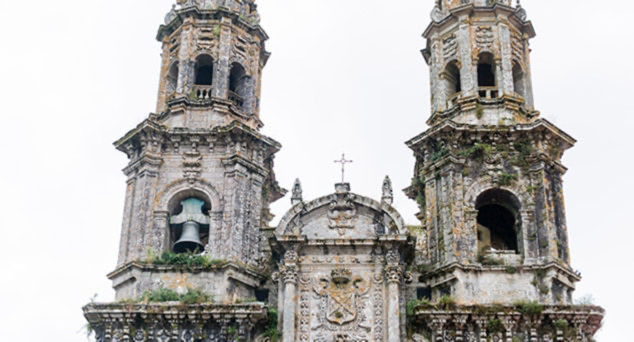
The Camino del Norte from Villalba
With 120km and available throughout the year, the Camino de Santiago del Norte from Villalba to Santiago is one of the most spectacular. In the municipality of Arzúa, it joins the Camino Frances resulting in a spectacular congregation of pilgrims.
On the route, you can visit the famous Monastery of Sobrado dos Monxes. The tour is distributed in a total of 7 nights and 8 days.
Route of the Camino del Norte
In its journey through the Iberian Peninsula, the Camino del Norte crosses six Spanish provinces: Guipúzcoa, Vizcaya, Cantabria, Asturias, Lugo and La Coruña.
The itinerary of the cantabrian section of the Camino de Santiago del Norte has a multitude of variants, mostly paths that go towards the plateau in search of other routes of the Camino de Santiago. Already from Irún, and for those who join the pilgrim path from the French town of Bayonne, there is a detour that allows you to link to the Camino Frances, known as the interior Basque Camino.
The Camino del Norte has multiple links to the Camino Primitivo. Hence, many authors consider that the Camino Primitivo is just a branch of the Camino del Norte, calling it the Camino Interior.
To access the Camino Primitivo from the Camino del Norte, two main alternatives are presented. Take the turn-off at Casquita, in Villaviciosa, which leads to Gijón, or opt for the turn-off for Pola de Siero and the Monastery of San Salvador de Valdedios, which leads to Oviedo.
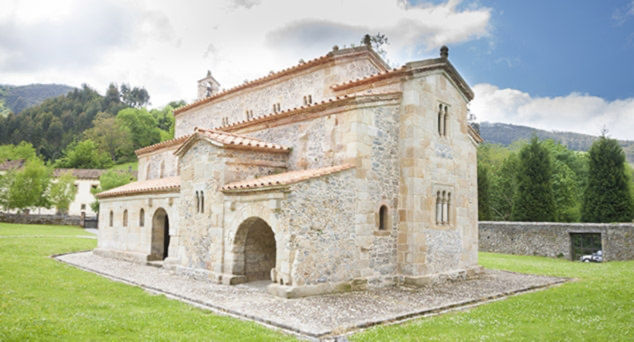
There are also variants due to the presence of rivers. In Castropol, pilgrims can take the Santiago Bridge of Abres to cross the mouth of the River Eo or continue through the most frequented modern bridge of Os Santo, in the Ribadeo estuary. At this point, it is also possible to cross the estuary in Barca, as was done in the Middle Ages.
When it comes to linking with the Camino Frances, the pilgrim also has different options. Continue to Arzúa, where both roads converge, or before reaching this town, take a detour that from Boimorto leads to O Pino, linking in Santa Irene with the Camino Frances.
Unlike other much more relaxed tours, the Camino de Santiago del Norte presents some difficulty. The presence of a multitude of rivers obliges the pilgrim to go in search of a bridge or a boat that allows him to cross them. And its terrain requires more physical preparation than other itineraries.
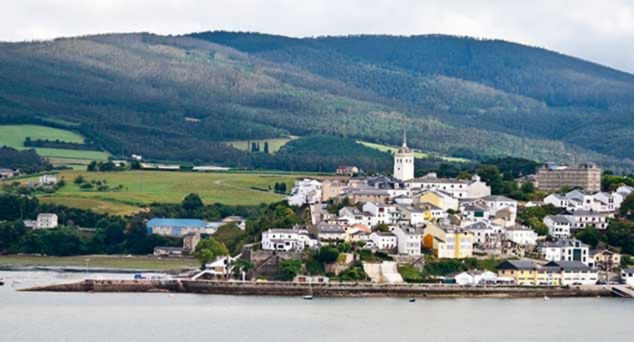
The reward for those who dare to travel will be the tranquillity of the seafaring towns that you will find on their route.
The beauty of a unique landscape on the Santiago route, where the greenery of the mountains merges with the blue of the Cantabrian Sea, exquisite gastronomy and a wide cultural diversity, will ensure that the adventure of touring the Camino de Santiago del Norte is an unforgettable experience.
Map of the Camino del Norte to Santiago de Compostela
Below, we attach the map of the Camino de Santiago del Norte so you can have a better idea about the itinerary.
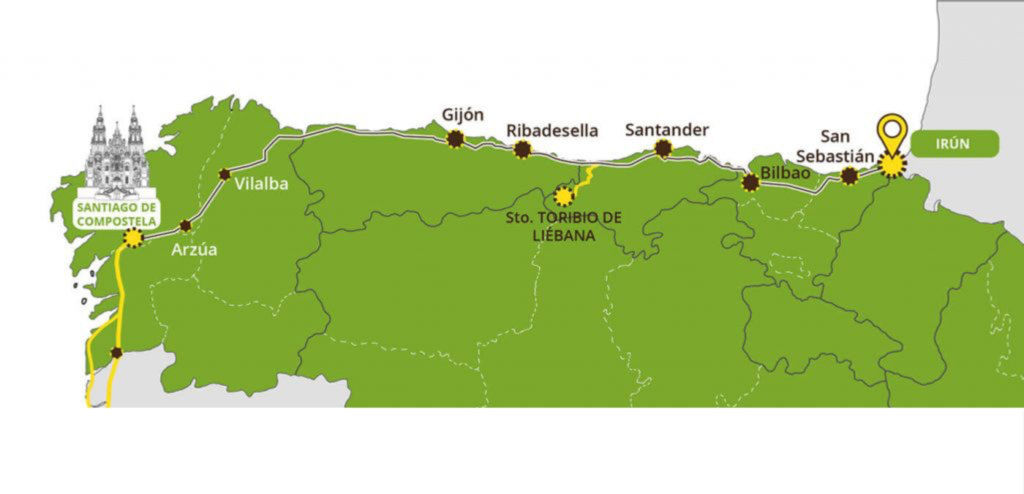
Profile of the Camino del Norte
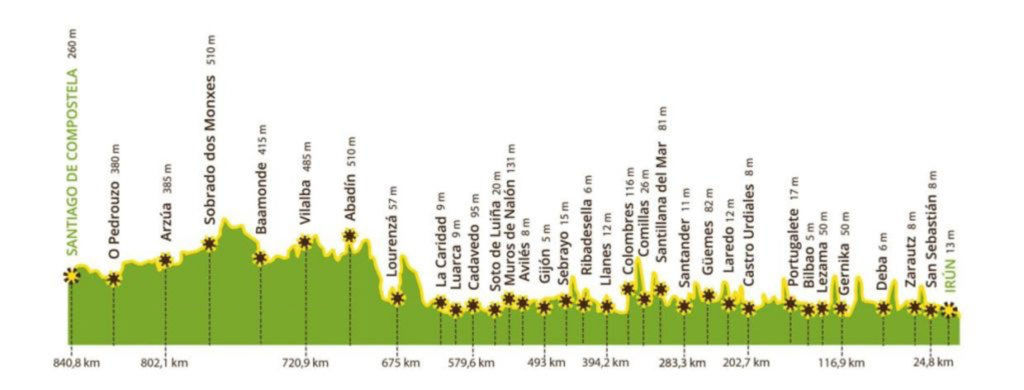
Profile of the Camino del Norte
As we have said at the beginning, the Camino de Santiago del Norte is one of the most demanding for pilgrims who go on foot and for those who decide to do it by bicycle.
Indeed, it has some important climbs distributed in passes that, above all, make their appearance before and during the stages of unifying with the Camino Frances.
Otherwise, the road is smooth but somewhat more rugged than other routes to travel in a large part because of its route that closely follows the coast.
This is part of its charm and that is why we have said that it is especially suitable for those who are nature lovers.
Infrastructure
Although it is a route with a lot of tradition, it is not a crowded one. This means that the Camino de Santiago del Norte is signposted well, but with less infrastructure than other roads.
Since the end of the 20th century, until the beginning of the 21st century, there has been a lot of hard work to update this route, recovering much of its old signs and bettering the indications in certain sections. Work has been completed by the associations of the Friends of the Camino de Santiago of different communities.
With regard to the accommodation network, it is not wide but enough to respond to the flow of pilgrims who travel this way. However, the route is crossed by cities with a wide range of accommodation, as well as small fishing villages that seduce the pilgrim after a hard day, with accommodation facing the sea.
If you wish, you can contact us and we will take care of the whole organization during the tour.
Stages on foot
We offer below the list of stages on foot that are included on the Camino de Santiago del Norte.
How long does the Camino de Santiago del Norte take?
The length of the Camino de Santiago del Norte varies depending on the routes we select. As we have detailed before, there are routes ranging from 7 to 14 days.
It has a total length (adding all the sections) of 824 km divided into 32 stages on foot plus 2 of the Camino Frances and 18 stages (which total 833km) by bicycle.
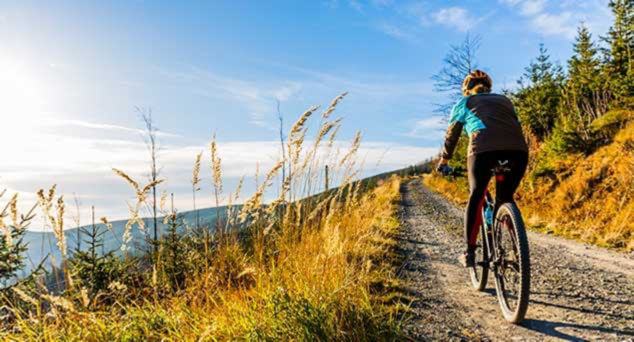
Therefore, on foot, it will take approximately 35 days to be done completely and about 19 to do it by bicycle. It all depends on factors such as time, the amount of tiredness accumulated or simply the need to want to enjoy the scenery longer.
The best season to do the Camino del Norte to Santiago de Compostela
Both for the Camino de Santiago del Norte and for any of the other available there is no better time to complete them. This is because each one has a special charm and advantages that others do not have.
Anyway, and for you to take in all the information possible, we will detail everything depending on the time the advantages of each season.
Spring
Spring has the disadvantage of weather instability and allergies. However, we could say that this second factor does not particularly affect the Camino de Santiago del Norte to travel in much of its journey along the coast of the Cantabrian coastline.
Therefore, we will be able to enjoy good weather and also with the advantage of being able to find accommodation in an easier way.
Summer
Summer is the quintessential time to complete the Camino de Santiago in any of its variants. It is because the good weather that for these dates is usually found in the north accompanies the need to seek more benign latitudes for the rest of the peninsula.
At the same time, and as it is the Camino de Santiago del Norte, an added advantage is that we will have the same facility to always find accommodation as the route will not be so crowded. Our proximity to the sea will keep us refreshed and great company although especially crowded at this time of year.
Autumn
One of the most important advantages of doing the Camino de Santiago del Norte in autumn is the spectacular character of its landscapes. In fact, the autumn confers to the whole area a special charm that we will not find at other times of the year. It is also an added advantage in the topic of accommodation but we must be careful with regard to unstable weather.
Winter
Winter is a time where we can be in more contact with nature because there will not be many people along the way. We will have all the accommodation we need, and at a better price than the rest of the year.
Guide to the places you can’t miss on the Camino de Santiago del Norte
As has been said, the Camino de Santiago del Norte is a place of great beauty. However, it is very advisable to know previously which are the places that we cannot miss. Here we offer you some of the most representative and most interesting points of the Northern route. You can’t miss them!
Places of interest
Guernica
One of the most interesting points of the route is the municipality of Guernica. In addition to the tragic events during the Spanish Civil War, when it was bombarded and later portrayed by Picasso, this city has a heritage of high-interest culture and great beauty.

Ribadesella
It is one of the most beautiful villages we will visit throughout our pilgrimage along the northern route. In it, you will also be able to enjoy the wonderful gastronomy of the area.
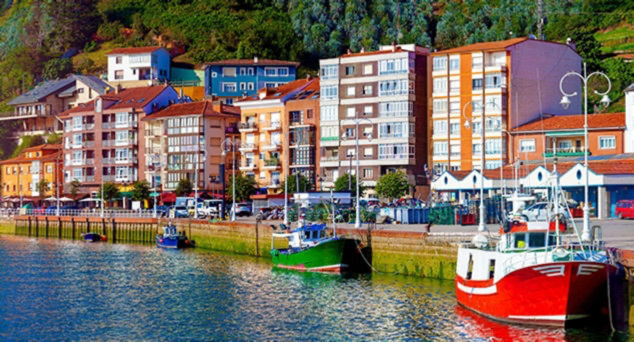
Llanes
Llanes, its beaches and cliffs are some of the points that we will enjoy during our trip on the Camino de Santiago del Norte.
Where to sleep – The best lodgings
From Hiking Club, we want to remind you that we have selected for you the best accommodation between the houses and rural hotels of the Camino. With it, you will be able to make your pilgrimage comfortably, knowing that no bad experiences await you.
Where to eat – The best restaurants
Casa Chelo: Located in Arzúa, this place is considered the second home of the Pilgrim. In it, we will eat very well with homemade and popular meals at a very affordable price. It’s all certainly delicious! Casa do Labrego: In Baamonde, you will find this typical Galician restaurant where you can taste the most typical of its gastronomy in a privileged and very rustic atmosphere. Without any doubt, a lovely place to eat very well. In Salceda de o Pino you will find A Casa Verde, an eminently convenient place where you can make a short stop and eat something to replace your strength. Takeaways are also available. It’s a youthful and fun atmosphere.
History of the Camino de Santiago del Norte
The origin of the Camino de Santiago del Norte, like all the routes of the Camino de Santiago, is linked to the discovery of the remains of Santiago the Apostle in the 9th century. During the reign of Alfonso II, The Chaste (760-842) in Asturias, there was a discovery that was quickly spread by the Christian population.
At that time, the Asturian monarch decided to make a pilgrimage to Santiago de Compostela, from Oviedo, to contemplate the newly discovered remains of the Apostle James the Elder. In fact, it was the king of Asturias who ordered to build a church in the place where the remains were found. Current location of the Cathedral of Santiago de Compostela.
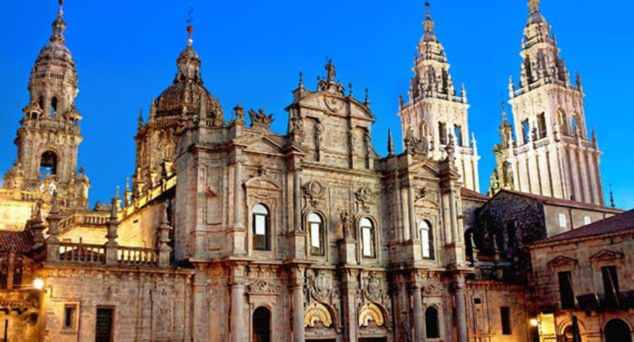
The Asturian monarch in search of an element that empowered ideologically and morally his Christian kingdom, confined to the northern peninsula against the overwhelming Muslim triumph, transformed the saint into a symbol against the struggle of Islam. The image of Santiago Matamoros was born in this fashion, which spread rapidly among pilgrims on the Camino de Santiago and the Christian community.
Origin of the Camino de Santiago del Norte
The Camino de Santiago del Norte is the most ancient Camino to Santiago according to the chronicles. Indeed, it was during the reign of Alfonso II when the discovery of the tomb of the Apostle James happened. Thereafter, the place became an indispensable centre for all Christendom.
There were some pilgrims who decided to imitate the pilgrimage that said King and other important characters had done before and then opened a more passable and safer route from the Arab attacks along the coast that is the one that at present constitutes the Camino de Santiago del Norte.
The discovery of the Camino de Santiago del Norte
His subjects imitated the pilgrimage of their monarch. With the experience, they realized that the route bordering the Cantabrian coast was less difficult than the path followed by the monarch. Following the Cantabrian route, pilgrimages to Santiago de Compostela began increasing.
The Cantabrian coast offered a less difficult path than the one followed by the monarch (known as the Camino Primitivo, at present) and was farther away from the dangerous lands occupied by the Arabs and swarming with the strife of the Reconquista.
This fact led some historians to think that the Camino de Santiago del Norte was more ancient than the Camino Frances.
However, at present, almost all the history scholars of the Camino to Santiago, coincide in pointing out that the Camino de Santiago del Norte is later, and that it was much less frequented than the Camino Frances. The explanation of this fact is attributed to the complexities of the terrain that this route presents.
There is no doubt that while other routes of the Camino to Santiago took years to become well-known, the Camino del Norte is considered one of the primitive roads. The Asturian-Galician paths of the Old Kingdom of Asturias were one of the first to lead pilgrims to Santiago.
Proof of this is that the Cathedral of Santiago, in Bilbao, is the only Cathedral, except that of Compostela, in homage to the apostle. It is believed that the current construction was erected on a former chapel dating from the 11th century.
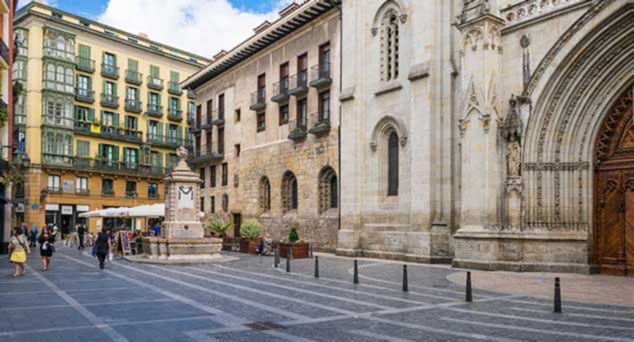
More evidence is that the first lodging for pilgrims that is recorded on this route is the Pilgrim’s Hospital in Pola de Siero, in Asturias, which dates from the year 1141.
The passage of foreign pilgrims by the hospitals on this route also demonstrates the existence of a flow of pilgrims that travelled the Camino del Norte, since the beginning of the early Middle Ages.
The competition between the Camino de Santiago del Norte and the Camino Frances
From the 11th century onwards, the monarchs Sancho III The Elder and Sancho Ramírez de Navarra strengthened the Camino Frances and it acquired the nuance of the privileged Jacobean path. However, this fact was not at the expense of the Camino del Norte, since the Camino de San Salvador, a route that runs between León and Oviedo, was not strengthened until almost the 12th century.
The advance of the Reconquista allowed the completion of a route through Burgos and León, which responded to the search for a more accessible itinerary and the urgent need to repopulate the land annexed by the Muslims. These two events led to a sharp decrease in the number of pilgrims travelling the Camino de Santiago del Norte.
However, during the 13th and 14th centuries, the Camino de Santiago del Norte continued to be travelled by pilgrims who opted for the Irun pass to enter Spain, as well as those coming from Northern European countries, disembarking in Bilbao or Bermeo. Many of them travelled part of the Camino de Santiago del Norte to link, later, to the Camino Frances.
The operation of this route during the 13th century is reflected in the pilgrimage of San Francisco de Assisi, in 1214, who walked, according to the tradition of the time, to San Salvador de Oviedo and then continued the route to Compostela.
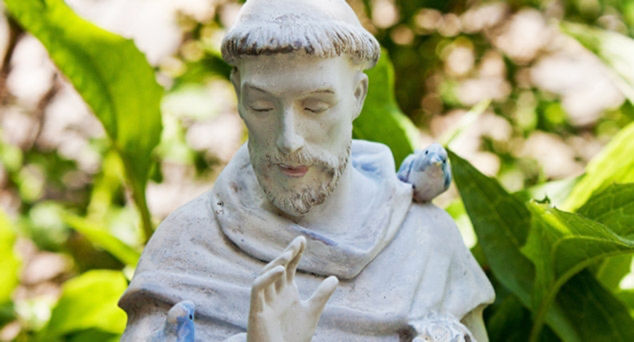
According to legend, many of the Franciscan temples found today on the Camino de Santiago del Norte are the result of their journey on the Camino de Santiago.
From the 14th century, there are some pieces of evidence of the passage of pilgrims on the Camino de Santiago del Norte. Some of them are Llanes Pilgrim’s Hospital or San Vicente de Barquera. Or toponymical references, such as the river that crosses Canvia, and Asturias, which is named Romeros.
From the crisis of Faith to the second boom of the Camino de Santiago del Norte
Some authors point out that the Cantabrian route was reborn during the 15th century. However, the Camino del Norte, like the other itineraries of the Camino de Santiago, recorded a decline during the 15th and 16th centuries, as the result of the crisis of faith that was experienced throughout Europe.
Dating from this time, the visit of the Armenian Bishop Martyr of Arzendjan, who made the Camino of Santiago from Rome, crossing the Camino de Santiago del Norte. Of this feat, made in 1489, a document was written and constitutes the first guide on the Camino de Santiago del Norte.
Another relevant pilgrim was the Venetian astronomer Bartolomeo Fontana, who began his pilgrimage in February 1538 and ended it in September of the following year. It draws attention that in the midst of a spiritual crisis, and being Rome the nucleus of Catholicism, the Italian pilgrims made their way to Santiago de Compostela.
During the last years of the 20th century, the declaration of the Camino Frances as a World Heritage Site by UNESCO, gave a boost to this way, observing a rapid recovery.
According to the statistics of the Camino de Santiago, it is believed that, during the first decade of the present century, approximately 6% of the pilgrims who arrived in Santiago de Compostela, followed the Camino de Santiago del Norte.
The Camino del Norte with Santiago Ways
Book with Santiago Ways your next Camino. We take care of organizing all the details of your route. Accommodation in hotels, rural houses, Galician stately homes and charming hostels. Also, we transfer your baggage between the different stages of the Camino de Santiago del Norte.
We also have a 24-hour hotline and emergency vehicle in case of anything urgent.
Ideal footwear for the Camino de Santiago del Norte
Sections of the Camino de Santiago del Norte
- San Sebastián – Bilbao
- Bilbao – Santander
- Santander – Ribadesella
- Ribadesella – Villalba
- Villalba – Santiago de Compostela
Opinions of other users on the Camino de Santiago del Norte
And since it is important to know the opinion of other pilgrims who have already completed the Camino de Santiago del Norte, we offer you some below.
The Camino de Santiago with Santiago Ways
Other Caminos de Santiago
- Camino Frances
- Camino de Santiago Portugues
- Camino de Santiago Portugues coastal route
- Camino de Santiago del Norte
- Camino de Santiago de Finisterre
- Camino de Santiago Ingles
- Camino de Santiago Primitivo
- Camino Lebaniego
- The Way of Lighthouses
- The Via de la Plata
Here you can see all the stages of the Camino de Santiago.
In Santiago Ways, we will advise you on which route of the Camino de Santiago is the best fit for you.
Other ways to complete The Camino de Santiago
- The Camino de Santiago in an organized group
- The Camino de Santiago with a dog
- The Camino de Santiago on bike
- The Camino de Santiago as a couple
- The Camino de Santiago at Easter
The quietest Caminos de Santiago
- Camino de Santiago from Sarria
- Camino de Santiago from Roncesvalles
- Camino de Santiago from Tui
- Camino de Santiago from Baiona
- Camino de Santiago from Ferrol



